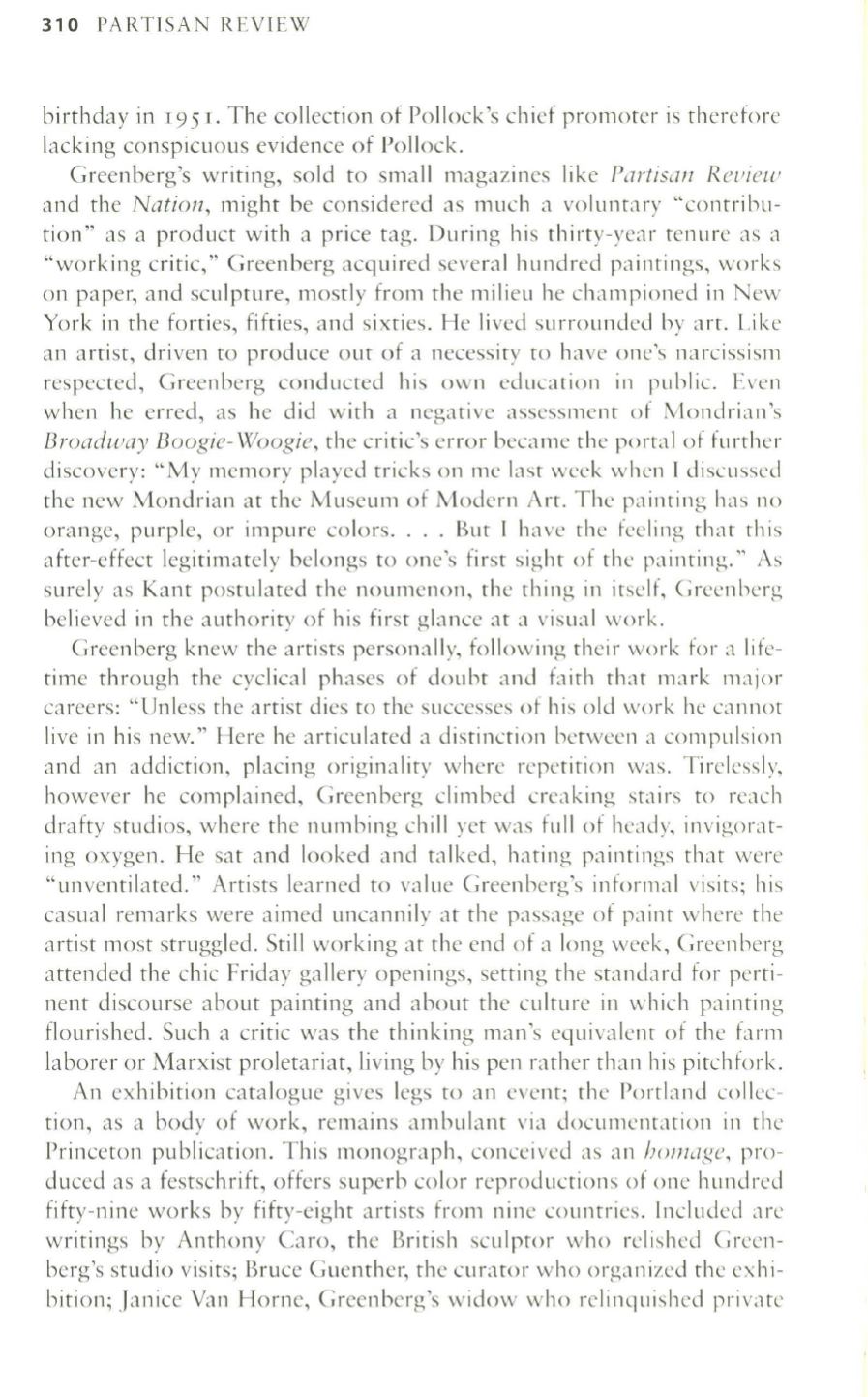
310
PARTISAN REVIEW
birthday in
195
T.
The collection of Pollock's chief promoter is therefore
lacking conspicuous evidence of Pollock.
Greenberg's writing, sold to small magazines like
Partisal1 Rel'iew
and the
Nation,
might be considered as much a voluntary "contrihu–
tion" as a product with a price tag. During his thirty-year tenure as a
"working critic," Greenberg acquired several hundred paintings, works
on paper, and sculpture, mostly from the milieu he championed in New
York in the forties, fifties, and sixties. He lived surrounded by art. Like
an artist, driven to produce out of a necessity to have one's narcissism
respected, Green berg cond ucted h is own ed uca tion in pu bl ic. Even
when he erred, as he did with a negative assessment of Mondrian's
Broadway Boogie- Woogie,
the critic's error hecame the portal of further
discovery: "My memory played tricks on me last week when I discussed
the new Mondrian at the Museum of Modern Art. The painting has no
orange, purple, or impure colors.... But I have the feeling that this
after-effect legitimately belongs to one's first sight of the painting." As
surely as Kant postulated the noumenon, the thing in itself, Greenberg
believed in the authority of his first glance at a visual work.
Greenberg knew the artists personally, following their work for a life–
time through the cyclical phases of douht and faith that mark major
careers: "Unless the artist dies to the successes of his old work he cannot
live in his new." Here he articulated a distinction between a compulsion
and an addiction, placing originality where repetition was. Tirelesslv,
however he complained, Greenberg climbed creaking stairs to reach
drafty studios, where the numbing chill yet was full of heady, invigorat–
ing oxygen. He sat and looked and talked, hating paintings that were
"unventilated." Artists learned to value Greenberg'S informal visits; his
casual remarks were aimed uncannily at the passage of paint where the
artist most struggled. Still working at the end of a long week, Greenherg
attended the chic Friday gallery openings, setting the standard for perti–
nent discourse about painting and about the culture in which painting
flourished. Such a critic was the thinking man's equivalenr of the farm
laborer or Marxist proletariat, living by his pen rather than his pitchfork.
An exhibition catalogue gives legs
to
an event; the Portland collec–
tion, as a body of work, remains ambulant via doculllelltation in the
Princeton publication. This monograph, conceived as an
hO/llage,
pro–
duced as a festschrift, offers superb color reproductions of one hundred
fifty-nine works by fifty-eight artists from nine countries. Included are
writings by Anthony Caro, the British sculptor who relished Green–
berg's studio visits; Bruce Guenther, the curator who organized the exhi–
bition; Janice Van Horne, Greenberg'S widow who relinquished private


